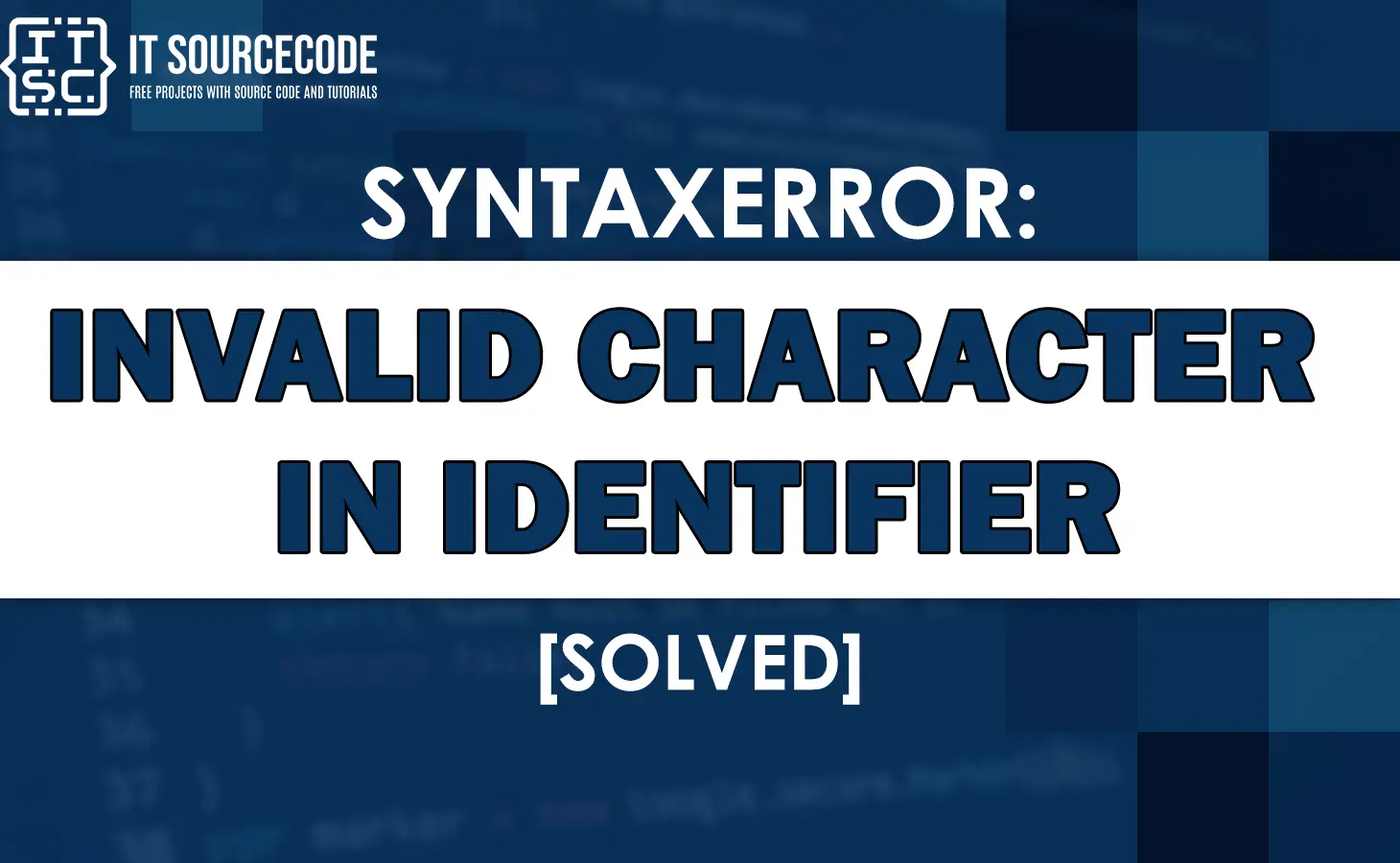The syntaxerror invalid character in identifier error message usually encounters when you’re working with Python.
If you are experiencing this error right now and don’t know how to fix it, continue reading.
In this article, we’ll delve into how to fix the invalid character in identifier in Python.
Apart from that, you’ll also discover new insights about this error.
What is “syntaxerror invalid character in identifier”?
The syntaxerror: invalid character in identifier error message occurs when you use an invalid character in the middle of a variable or function in your Python code from copying a certain code in other sources that have a formatted code.
This error indicates that you have some character in the middle of a variable name, function, etc. that’s not a letter, number, or underscore.
Moreover, this error message is the same as the following example code:
website = ‘Itsourcecode‘Output:
File "C:\Users\pies-pc2\PycharmProjects\pythonProject\main.py", line 1
website = ‘Itsourcecode‘
^
SyntaxError: invalid character '‘' (U+2018)What is “identifiers”?
Identifiers are names given to variables, functions, classes, or any other element in a programming language.
In Python, identifiers can only have the following characters
✅ “0” to “9” (digits)
✅ “A” to “Z” (alphabets uppercase)
✅ “a” to “z” (alphabets lowercase)
✅ “_” (underscore)
Why does the “invalid character in identifier” SyntaxError occur?
This error can occur due to several reasons, which include the following:
👎 Using special characters, such as punctuation marks or mathematical symbols, in an identifier can trigger this error.
👎 Incorrect character encoding issue.
👎 File Format Incompatibility.
👎 Improper usage or mismatched quotation marks within identifiers
How to fix “syntaxerror invalid character in identifier”?
To fix the syntaxerror: invalid character in identifier, verify your code for any variable names that contain invalid characters. Ensure that all variable names start with a letter or underscore, and only contain letters, numbers, and underscores.
If you find an invalid character, you can either remove it or replace it with a valid character.
Solution 2: Rewrite the code
Rewriting the line in your code that causes an error is the best way to resolve this error.
It is the solution for the example code that we illustrate above.
For example:
website = 'Itsourcecode'
print(website)Output:
ItsourcecodeIn some cases, this error also occurs in mathematical operations.
For example:
sample_1 = 500
sample_2 = 150
result = sample_1 — sample_2
Output:
File "C:\Users\pies-pc2\PycharmProjects\pythonProject\main.py", line 4
result = sample_1 — sample_2
^
SyntaxError: invalid character '—' (U+2014)
To fix the issue, change it to the correct language and rewrite the minus “-” sign.
Corrected code:
sample_1 = 500
sample_2 = 150
result = sample_1 - sample_2
print(result)Output:
350Solution 2: Check for invisible characters
Usually, invisible characters such as a zero-width space can cause this error. You can use the repr function to check for invisible characters.
And ensure that you are using the correct encoding when writing your code.
Conclusion
In conclusion, the syntaxerror: invalid character in identifier error message occurs when you use an invalid character in the middle of a variable or function in your Python code from copying a certain code in other sources that have a formatted code.
This article already discussed what this error is all about and multiple ways to resolve this error.
By executing the solutions above, you can master this Syntaxerror with the help of this guide.
You could also check out other “SyntaxError” articles that may help you in the future if you encounter them.
- Multiple statements found while compiling a single statement
- Syntaxerror: unexpected token o in json at position 1
- Syntaxerror: ‘break’ outside loop
We are hoping that this article helps you fix the error. Thank you for reading itsourcecoders 😊

